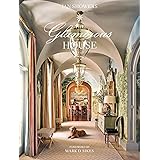Lighting is a fundamental element that can profoundly influence the ambiance and functionality of any room. Unfortunately, it is often an afterthought, leaving what might otherwise be a beautifully designed space feeling off or uncomfortable. Understanding the principles of effective **interior lighting design** is crucial for creating a home that not only looks good but also feels welcoming and works for your lifestyle.
The video above delves into some common lighting mistakes and offers practical tips to transform your living spaces. This article will build upon those insights, providing a deeper dive into how you can illuminate your home with purpose and style. We will explore key concepts such as color temperature, the power of layered lighting, and strategic placement, all designed to help you create an atmosphere that truly shines.
Avoiding Common Interior Lighting Design Blunders
Let’s start by shining a light on the pitfalls many homeowners encounter. Recognizing these common errors is the first step toward crafting a perfectly lit environment. From selecting the right warmth for your bulbs to ensuring visual harmony, each aspect plays a vital role in your home’s overall feel. Avoid these missteps to achieve a truly brilliant **home lighting design**.
1. Getting Color Temperatures Wrong
One of the most frequent errors in **interior lighting design** is choosing the wrong color temperature for a space. Think of light color like the temperature of a flame: a low fire is warm and orange, while a very hot flame can appear blue. Color temperature, measured in Kelvin (K), ranges from a warm, golden yellow to a cool, crisp blue, impacting how a room feels and how colors within it are perceived.
The transcript highlights four main categories, each suited for different areas:
- Warm White (2700-3000K): Emits a cozy, golden yellow light, much like traditional incandescent bulbs. This comforting glow is ideal for intimate and relaxing spaces such as bedrooms, living rooms, and dining areas. It helps create a serene and inviting atmosphere, perfect for winding down or enjoying a meal.
- Soft White (3000-4000K): Offers a slightly cooler, yellowish-white light. This versatile temperature balances warmth with brightness, making it excellent for areas where clarity and a friendly ambiance are desired. Kitchens and bathrooms particularly benefit from soft white, providing ample light for tasks without feeling harsh.
- Bright White (4000-5000K): This light falls between pure white and blue, providing a more energetic and focused environment. It is best reserved for functional spaces where alertness is key, like home offices, garages, or laundry rooms. Bright white helps minimize eye strain during detailed work and enhances visibility in practical settings.
- Daylight (5000K+): Despite its name, daylight bulbs create a distinctly cool, blue-toned light. While they maximize color contrast and improve concentration, making them suitable for commercial spaces, hospitals, or art studios, they can make a home feel sterile and unwelcoming. For residential settings, it is generally best to avoid daylight bulbs if you desire a warm and cozy atmosphere.
Understanding these distinctions is like choosing the right filter for a photograph; it changes the entire mood. By matching the Kelvin temperature to the room’s purpose, you ensure your **room lighting** enhances comfort and utility.
2. Mixing Color Temperatures in a Single Space
Just as jarring as choosing the wrong color, is the mistake of mixing different color temperatures within one room. Imagine a painter using two wildly different shades of blue on the same wall – it would create a disjointed and uneasy visual. Similarly, when lights with varying color temperatures are in close proximity, the inconsistencies become glaringly obvious.
This creates a visual dissonance that can make furniture look unnatural, wall colors appear distorted, and even skin tones seem unhealthy. The subtle differences between a warm white and a soft white bulb, while individually appealing, can clash dramatically when placed together in a single space. The goal for cohesive **lighting design** is uniformity within a given area.
An interesting challenge arises in open-plan spaces where, for example, a kitchen (often benefiting from cooler light) flows into a living area (which typically requires warmer light). In such cases, a smart compromise is key. Opt for a color temperature that sits comfortably between warm white and soft white (around 3500K-3800K). This consistency ensures a harmonious flow throughout the larger space without any jarring transitions, allowing your **home lighting** to feel unified.
3. Neglecting Layered Lighting
Relying solely on a single light source, such as an overhead fixture, is a common error that severely limits a room’s potential. Imagine a play where only one spotlight shines down from the ceiling; actors would have harsh shadows, and the set would lack depth. Effective **interior lighting design** is all about layering different types of light, much like adding depth to a painting with various brushstrokes.
Layering ensures light is evenly dispersed, eliminating unflattering shadows and creating visual interest. This technique involves combining at least two, and ideally all four, types of lighting to create a dynamic and functional environment. Each layer serves a unique purpose, contributing to the overall beauty and utility of the space.
Here are the four essential types of lighting for your home:
- Overhead Lighting: This is your primary, general light source, most commonly found in ceiling fixtures. While essential for overall illumination, relying solely on overhead light often casts harsh shadows on people and objects, making a room feel flat and uninviting. Think of it as the base layer, necessary but not sufficient on its own for compelling **room lighting**.
- Ambient Lighting: This layer creates a soft, natural glow, providing foundational illumination that enhances the room’s mood. Examples include lamps with fabric or opaque glass shades, which diffuse light gently across the space. Ambient lighting works like a soft blanket, enveloping the room in a comfortable and inviting atmosphere, providing a warm backdrop to your **home lighting design**.
- Task Lighting: As its name suggests, task lighting is brighter and more focused, designed for specific activities like reading, cooking, or working at a desk. Unlike ambient light, its primary purpose is functional. Think of a focused beam from a table lamp over a book, under-cabinet lighting in a kitchen, or vanity lights in a bathroom. These lights are critical for preventing eye strain and improving efficiency in functional zones.
- Accent Lighting: This is the most aesthetic layer, used to highlight specific features or objects within a room, such as artwork, architectural details, or unique furnishings. Accent lighting is generally brighter than ambient light but used sparingly to create drama and contrast. Examples include recessed spotlights angled at a painting, LED strips under shelving, or track lighting directed at a specific feature. It adds personality and flair to your **interior lighting design**, drawing attention to what you want to showcase.
By combining these lighting types at varying heights and locations, you can truly elevate a space. It creates depth, enhances textures and colors, and allows you to adjust the ambiance for different activities and times of day, making your **lighting design** truly adaptable.
Clever Lighting Tips for a Brilliant Home
Beyond avoiding common mistakes, incorporating strategic tips can elevate your home’s illumination from functional to truly transformative. These clever approaches consider not just the light itself, but also how it interacts with your existing decor and the overall purpose of each space. Let’s explore how to integrate these powerful **lighting tips** into your home.
1. Matching Lighting Fixtures to Other Room Elements
While the quality of light is paramount, the visual appeal of your lighting fixtures themselves should not be overlooked. Think of light fixtures as jewelry for your room; they should complement the overall ensemble rather than clashing. Matching fixtures to other elements creates visual continuity, making the space feel cohesive and thoughtfully designed. This principle is vital for harmonious **home lighting**.
You can achieve this harmony through color, texture, or material. A simple yet impactful method is to match your lighting fixtures with your existing hardware. For instance, if your kitchen features matte black taps and cupboard handles, selecting matte black pendant lights or track lighting will tie the entire space together. Similarly, a living room with brass accents could benefit from brass-finished floor lamps or wall sconces.
This concept extends beyond metals. If your decor incorporates natural textures like rattan, consider lampshades or pendant lights made from similar materials. Matching fabrics or wood tones can also create a unified aesthetic. By coordinating your lighting choices with your furniture, finishes, and accessories, you ensure every element speaks to each other, resulting in a refined and integrated **interior lighting design**.
2. Diffusing Your Light Sources
Harsh, direct light often creates unappealing shadows and can make a room feel stark. Imagine a bright, bare bulb; it’s effective for seeing, but not necessarily for comfort. Diffusing light sources is like putting a soft filter over a camera lens, softening the intensity and spreading the light more evenly. This technique significantly enhances the flattering quality of your **room lighting** for both people and objects.
The effect is similar to when a cloud passes in front of the sun. The direct, intense sunlight becomes softer and more uniform, making it easier to see details without harsh glare. This concept is widely used in photography and filmmaking because diffused light minimizes unflattering shadows and highlights. For your home, incorporating lampshades, opal glass shades, or even frosted bulbs can achieve this softening effect.
These elements gently break up and scatter the light, reducing harsh contrasts and creating a more comfortable ambiance. While exposed bulbs can offer a certain industrial or minimalist aesthetic, it’s always wise to balance them with diffused light sources. A mix ensures even illumination, making your space feel more inviting and visually pleasing, a crucial component of thoughtful **lighting design**.
3. Utilizing Dimmers for Adjustable Ambiance
The ability to adjust the brightness of your lights is a game-changer for any **interior lighting design**. Think of dimmers as a volume control for your lights; you wouldn’t want music stuck at one loud level all the time. Different activities and times of day call for different levels of illumination, and dimmers provide that essential flexibility.
You certainly wouldn’t want a blindingly bright light when preparing for bed, nor a dim, insufficient light when trying to read or cook. Dimmers empower you to alter the atmosphere of your space instantly. For instance, you can dim the lights in your dining room to create an intimate setting for a dinner party, or brighten them for family game night.
Traditionally, dimming was achieved through special wall switches. However, with the rise of smart home technology, options like Philips Hue bulbs or IKEA TRÅDFRI systems allow you to control brightness, and often color temperature, through an app, remote, or voice assistant. These smart bulbs are particularly excellent for renters, as they offer advanced control without requiring electrical modifications. For homeowners considering renovations, integrating traditional dimmers or smart switches directly into your home’s wiring provides a seamless and permanent solution for ultimate **home lighting** control.
4. Extending Light to Outdoor Spaces
The final, yet frequently overlooked, tip for enhancing your indoor spaces involves lighting your outdoor areas. A dark, unlit view outside your window at night can make your interior room feel smaller and enclosed, like looking into a black mirror. However, by illuminating your balconies, patios, or backyards, you can dramatically expand the perceived size of your rooms.
Adding outdoor sconces, strategically placed spotlights in potted plants, or even stringing fairy lights through a tree encourages your eyes to look beyond the windowpane. This visual extension creates the illusion of a much larger space, seamlessly blending your indoor and outdoor environments. It’s like adding an extra, ethereal room to your home.
Beyond aesthetics, outdoor lighting also serves practical purposes, enhancing safety and security around your property. Thoughtfully placed path lights, motion-sensor lights, and uplights can highlight landscaping, improve navigation, and deter unwanted visitors. While perfecting the **lighting design** of your outdoor areas requires some effort, the payoff in terms of expanded space, enhanced ambiance, and increased security makes it a truly worthwhile investment for your entire home.











